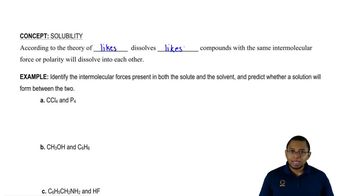Classify each of the following as a pure substance or a mixture:
c. ice (H2O)
 Verified step by step guidance
Verified step by step guidance Verified video answer for a similar problem:
Verified video answer for a similar problem:



 1:34m
1:34mMaster Classification of Matter with a bite sized video explanation from Jules
Start learning